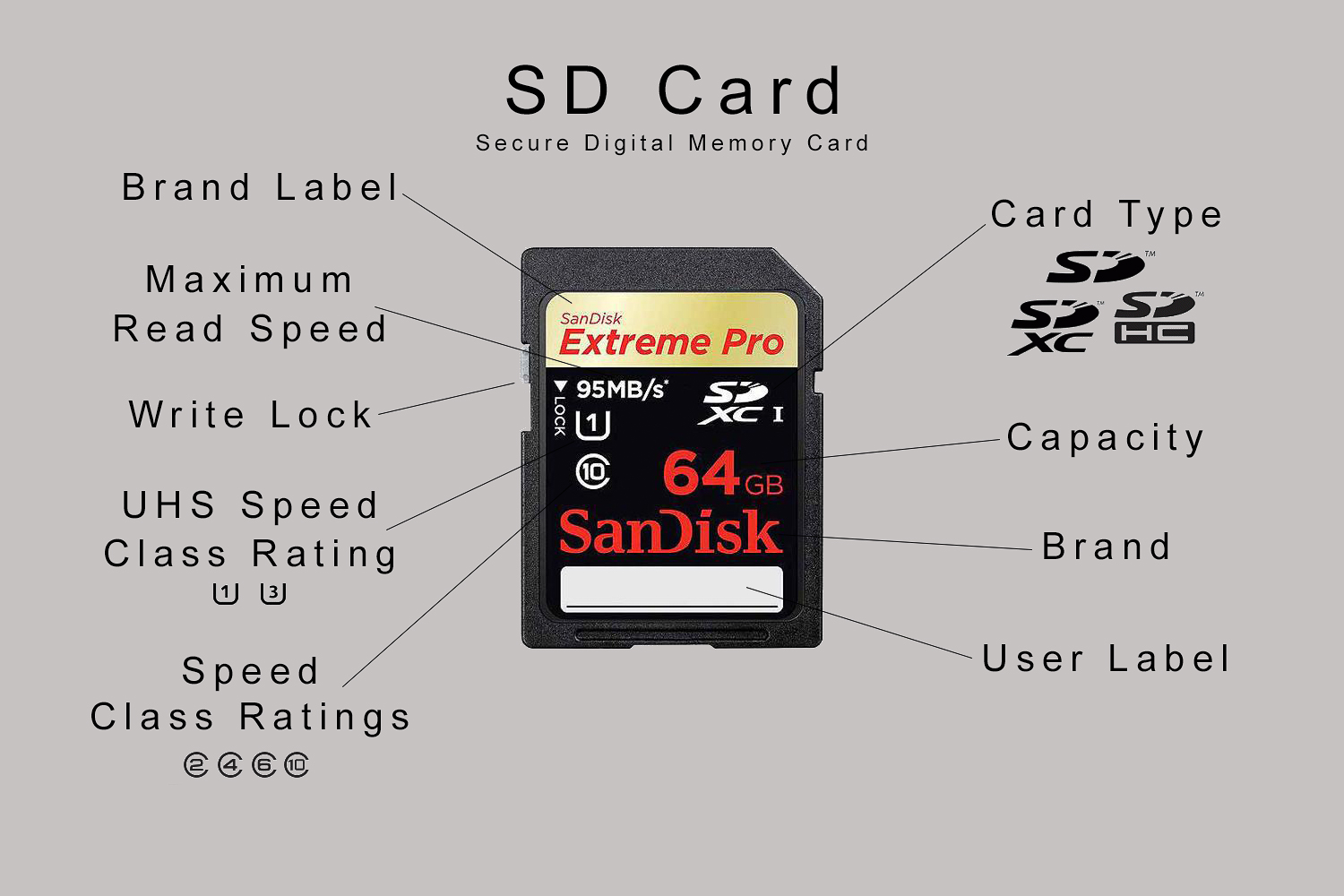I have had a lot of questions lately about SD cards and what all of those numbers and symbols mean. So, I thought it would be beneficial to provide an overview of these storage devices and explain what all those things mean. First, some background information. Secure Digital Memory Card (aka SD Card) standards are governed by the SD Association. The association was founded by Panasonic, SanDisk and Toshiba, and now has over 1,000 members. Their charter is to develop standards for the SD Memory Cards. This helps maintain compatibility with the devices we use.
The graphic below details the various labeling elements found on a Secure Digital Memory Card.
- Card Type: This is the type of card. Different card types use different file formats and newer cards won’t work in older card readers. “SD” is the original card type and has a maximum capacity of 2GB. SDHC was next in line and has a capacity between 2GB and 32GB of storage. Finally, SDXC is the latest specification and has a capacity range of 32GB-2TB.
- Capacity: This denotes the capacity of the card shown in either Gigabytes (GB) or Terabytes (TB).
- Brand: This is the brand of the card (e.g. SanDisk, Panasonic, etc.).
- User Label: An area where you can write a special note about the contents of the card. I rarely use this area as the contents change and, if you have multiple cameras, you are better off leaving this one blank.
- Speed Class Ratings: This is an older speed-class rating. It is redundant to the UHS speed class but many card manufacturers include it as well since many consumer products still recommend products based on the old standard. A class 10 is the fastet of the old speed class ratings and a class 10 card is verified to never write slower than 10 MB/second, class 4 would be never slower than 4 MB/second.
- UHS Speed Class Rating: The UHS rating of a card determines the maximum bus speed at which a card can read, assuming the memory in the card is fast enough to match it. Non-UHS cards max out at 25 MB/s, while UHS-I cards support up to 104 MB/s, and UHS-II cards support up to 312 MB/s. Both the card reader and card must support the same standard to benefit from the increased speeds. UHS cards are backward compatible with older readers—they just won’t be as fast in them.
- Write Lock: There is a small tab that when placed in the down position will not allow a device to “write” data to the card, thus, protecting the contents. I use this when I fill-up a card in the field when I want to make sure I don’t overwrite the content of the card.
- Maximum Read Speed: This is the most important piece of information on the card label. It tells you how “fast” the card is. The higher the number the faster the card. This information is written in MB/s (Megabytes per second). In this example, this card can sustainably write data at 95 Megabytes per second. This is considered a “fast card”.
- Brand Label: This is another area used by the card manufacturer to place more information about their branding. You will usually see branding information consistent with the card speed. I usually ignore this area and look for the MB/s rating.
- Another Speed Rating (Not Shown): Sometimes you will see another speed rating like “1000x”. This is another (rather outdated) way of expressing the max read speed. It is based on the read speed of audio CDs at 150 KB/s. You can figure out how fast a 1000x card is in KB/s by multiplying 150 by 1,000 and converting KB/s to MB/s by dividing by 1,000 (the answer is 150 MB/s).
I hope this was helpful. Please use the section below to post your comments, questions or suggestions.
PS: Please don’t respond to this message as it will not reach me. Either post a comment or forward your response to my email address (terry@tkahler.com)

Many thanks, Terry. Very helpful.
Thanks Rick. I’m glad you found it useful.